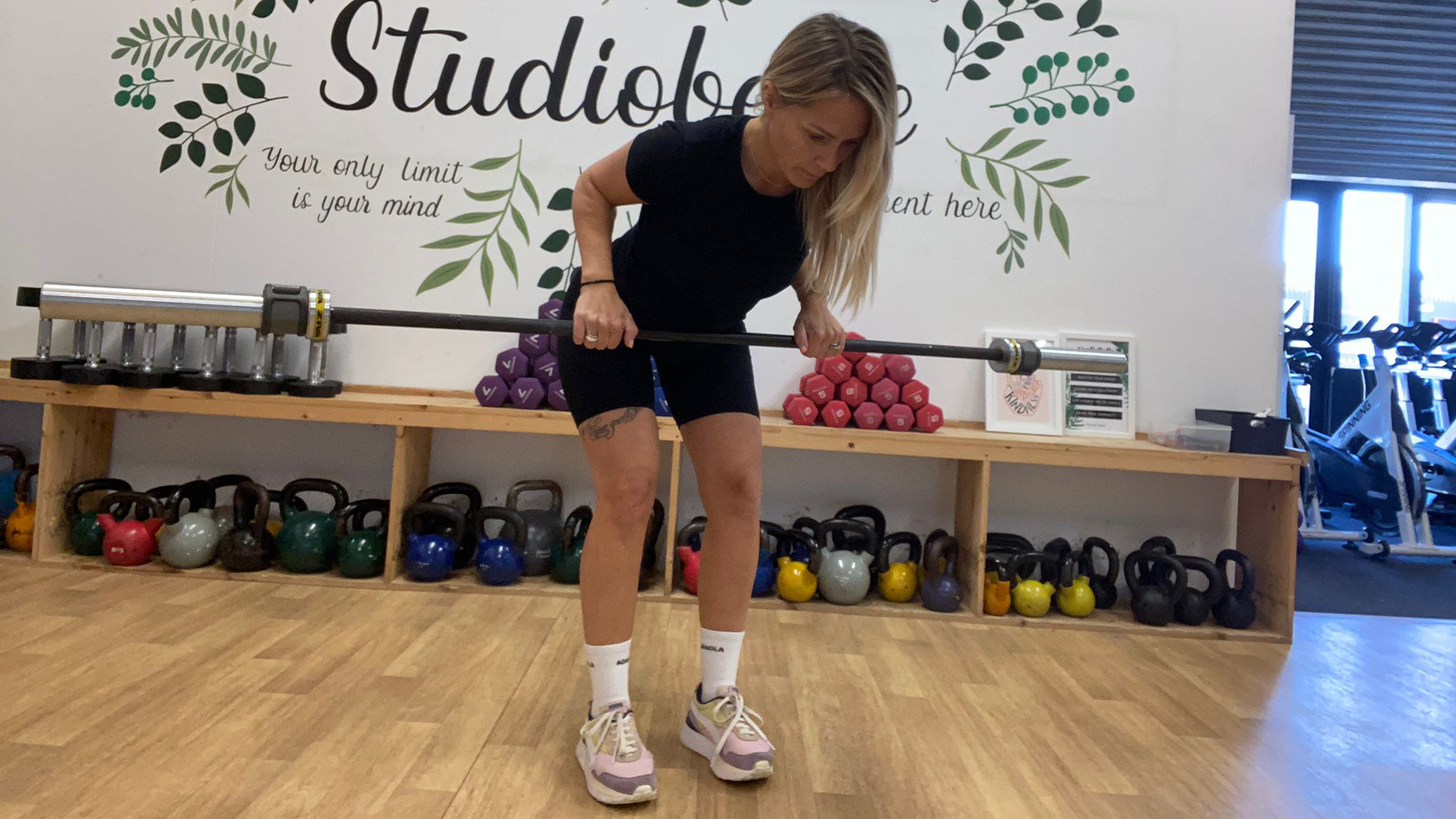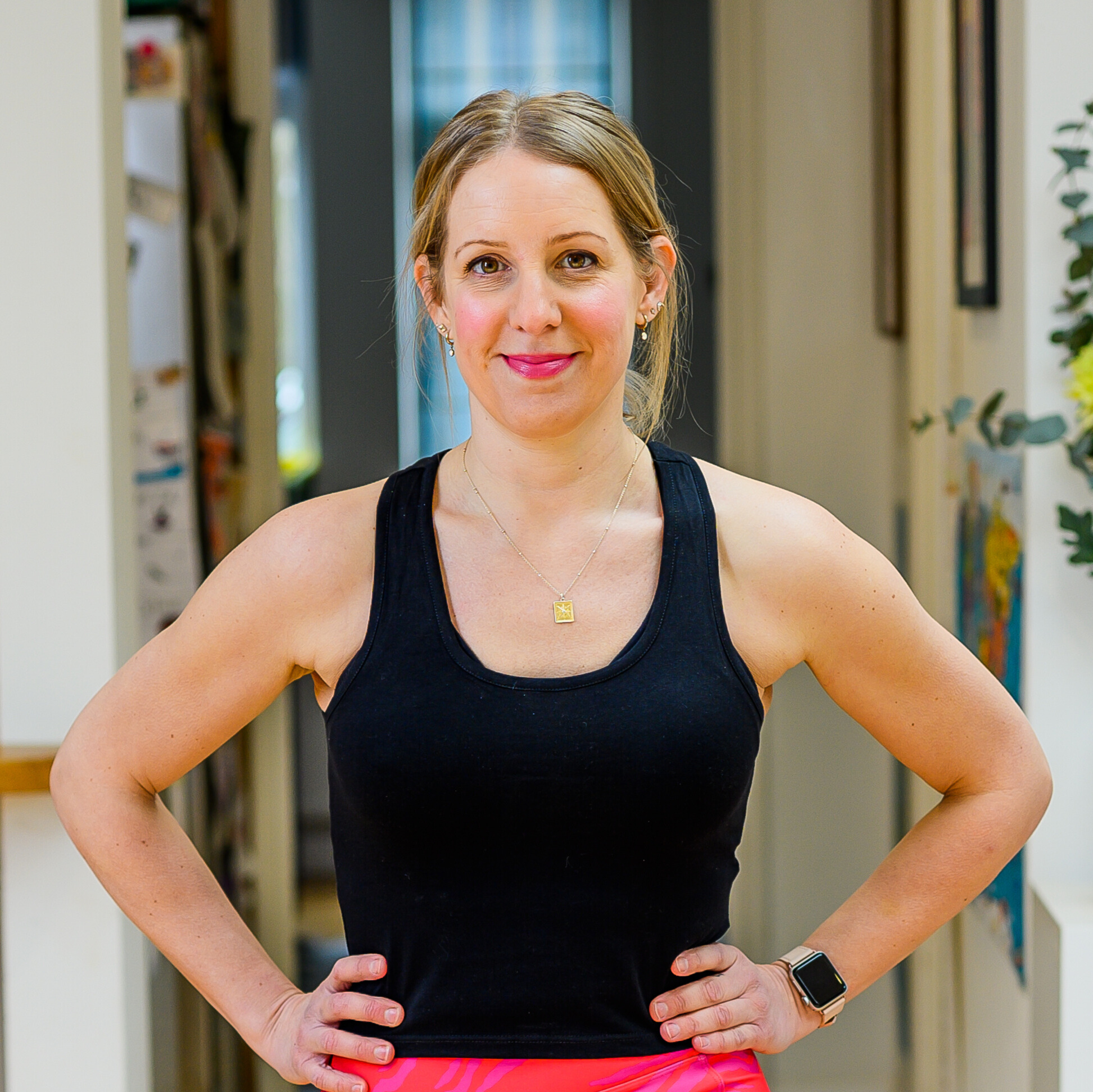How to do a barbell row
How to do a barbell row: step-by-step instructions for this back-strengthening exercise.


Knowing how to do a barbell row correctly can reduce the risk of injury, help strengthen your back and improve posture.
This compound exercise is a type of resistance or strength training, which is important for building muscle mass and bone density, especially as we age. Studies have found that regular resistance work, such as weight lifting, can reduce the risk of osteoporosis in women.
In this article we talk to personal trainer Angie Haviland-Wyer, who runs strength-training classes at her StudioBelle Gym in the UK, to find out exactly how to do a barbell row. And don’t worry if you don’t own a barbell, as you can use the best adjustable dumbbells to do the same move.

Angie is a qualified personal trainer and owner of StudioBelle Gym in Warminster, U.K. She specializes in kettlebells, suspension training, spinning, boxercise and circuits.
How to do a barbell row
“Slow, controlled movements will serve you better than lifting a weight that’s too heavy that you can’t handle,” warns Haviland-Wyer.
Before you start, load your barbell with weight – or just use the bar without weights if you are a beginner – and leave it on the floor in front of you.


Step one: Plant your feet hip-width apart, bend your knees as your hinge from the hips, keeping your back straight and your neck in line with your spine. The barbell should be on the floor in front of you.
Step two: Grab the bar with two hands (palms facing down) and, with soft knees, bring it up to mid-shin height.
Start your week with achievable workout ideas, health tips and wellbeing advice in your inbox.
Step three: Take a deep breath to engage the core, then with elbows narrow, squeeze shoulders together to ‘row’ the weight up towards your chest. Then slowly lower it back down again to the mid-shin height. That’s one rep.
What muscles are worked by a barbell row?
The barbell row is a great back-strengthening exercise that can increase strength and improve posture, says Haviland-Wyer.
“This move engages the latissimus dorsi, mid and lower trapezius, rear deltoids and the rhomboids. It also recruits some supporting muscles such as the biceps, forearms, rotator cuff and lower back,” she says.
“It’s an excellent exercise for building many parts of the back muscles, it can correct bad posture and strengthen and improve muscle mass from the top to the bottom of the back.”
Common mistakes during a barbell row
"There are a few common mistakes with this move," says Haviland-Wyer, "and that’s why getting the form and technique right first is so important."
Haviland-Wyer recommends starting with a low weight, rather than opting for a heavy load to begin with. It's also important to not arch your back during the move, as this could lead to injuries.
If you also want to get stronger, you need to steadily increase the weight over the course of several weeks.
"This is known as progressive overload," explains Haviland-Wyer, "which is a fitness principle that basically means that you keep challenging the body and muscles with an increase in weights, reps, sets or intensity."
“If you are new to the barbell, start with a ‘naked’ bar before loading any weights. Just do five reps focusing on control and form before you increase the reps or add any weight.”
Maddy Biddulph is a journalist specializing in fitness, health and wellbeing content, with 26 years in consumer media working as a writer and editor for some of the bestselling newspapers, magazines and websites in the US and UK, including Marie Claire, The Sunday Times and Women’s Health UK.
She is a CIMPSA-certified PT and works one-on-one with clients, as well as running Circuits Club classes which mixes cardio and strength training and chair-based exercise classes for seniors.
